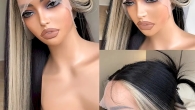
How to Dry Wigs: A Comprehensive Guide for Perfect Results
Wigs are a fantastic accessory that can completely transform your look, but proper maintenance is crucial to keep them looking their best. One essential aspect of wig care is knowing how to dry wigs correctly. Drying wigs improperly can lead to tangling, damage, and a less-than-desirable appearance. This guide will walk you through the best methods for drying wigs to ensure they stay fabulous and last longer.
Why Proper Wig Drying is Important
Properly drying your wig is crucial for maintaining its shape, texture, and overall quality. Whether your wig is made from human hair or synthetic fibers, each type requires different care. Understanding how to dry wigs properly helps avoid common issues such as:
- Frizz and Tangling: Incorrect drying methods can cause wigs to become frizzy and tangled.
- Damage to Fibers: Excessive heat or improper handling can damage both human and synthetic hair fibers.
- Loss of Shape: Wigs can lose their style and shape if not dried properly.
How to Dry Wigs: The Basics
1. Gently Wash Your Wig
Before you begin drying, ensure your wig is clean. Start by gently washing it with a wig-friendly shampoo. Avoid using regular hair shampoo as it can be too harsh. Follow these steps:
- Fill a basin with cool or lukewarm water.
- Add a small amount of wig shampoo.
- Submerge the wig and gently agitate the water.
- Rinse thoroughly with cool water until all shampoo is removed.
2. Condition the Wig
After washing, apply a conditioner designed for wigs to keep the fibers soft and manageable. Follow the product instructions for the best results. Generally, you should:
- Apply conditioner to the wig, avoiding the roots.
- Let it sit for a few minutes.
- Rinse thoroughly with cool water.
3. Remove Excess Water
To prevent the wig from becoming too saturated, gently remove excess water:
- Place the wig on a clean, dry towel.
- Pat the wig gently to absorb excess moisture. Avoid wringing or twisting as this can cause damage.
Drying Methods for Different Types of Wigs
1. Air Drying
Air drying is the gentlest method for drying wigs and is suitable for both human hair and synthetic wigs. Follow these steps for optimal results:

- Place the Wig on a Wig Stand: Using a wig stand allows air to circulate around the wig, which helps it dry evenly.
- Position in a Well-Ventilated Area: Choose a location with good airflow to speed up the drying process.
- Allow Time to Dry: Depending on the wig’s thickness and humidity, this can take several hours to overnight.
2. Using a Blow Dryer
If you need to dry your wig more quickly, a blow dryer can be used, but it requires caution:
- Set the Dryer to Low Heat: High heat can damage the wig fibers, especially for synthetic wigs.
- Keep a Safe Distance: Hold the blow dryer at least 6 inches away from the wig.
- Move the Dryer Constantly: Avoid concentrating heat on one spot to prevent overheating.
3. Using a Towel
For a faster drying option, especially if you don’t have a wig stand:
- Lay the Wig Flat on a Towel: Use a clean, dry towel and lay the wig flat to absorb excess water.
- Gently Press: Press down on the wig with the towel to remove more moisture without wringing or twisting.
- Reshape and Air Dry: After pressing, reshape the wig and place it on a wig stand to finish drying.
Tips for Maintaining Wig Quality During Drying
- Avoid Direct Sunlight: Exposure to direct sunlight can cause color fading and damage the fibers.
- Don’t Overuse Heat: Excessive heat can cause synthetic fibers to melt or become brittle.
- Use Wig Products: Invest in high-quality wig care products that are designed for your specific wig type.
Common Mistakes to Avoid When Drying Wigs
1. Using High Heat
How to dry wigs? High heat can cause significant damage to both human and synthetic wigs. Always use low to medium heat settings if using a blow dryer.
2. Wringing or Twisting
Wringing or twisting the wig can cause fiber breakage and lead to tangling. Always pat gently and avoid manipulating the wig too much.
3. Ignoring Wig Type
Different wigs require different care. Synthetic wigs and human hair wigs have unique drying needs, so be sure to use the appropriate method for your wig type.
Maintaining Wig Shape and Style
1. Re-shaping During Drying
As the wig begins to dry, gently reshape it to maintain its style. For curly wigs, use your fingers to define curls, while straight wigs should be brushed lightly to avoid tangles.
2. Using Wig Combs or Brushes
Once the wig is partially dry, use a wide-tooth comb or a wig brush to detangle and style. Avoid using regular brushes, which can cause damage.
How Often Should You Dry Your Wig?
The frequency of drying depends on how often you wear your wig and the conditions it’s exposed to. Regular maintenance, including proper drying, will prolong the life of your wig and keep it looking its best.
Additional Wig Care Tips
1. Storing Your Wig Properly
Proper storage is essential for maintaining the shape and quality of your wig. Follow these guidelines to ensure your wig stays in top condition:

- Use a Wig Stand: When not in use, place your wig on a wig stand or mannequin head. This helps retain its shape and prevents tangling.
- Keep Away from Heat and Sunlight: Store your wig in a cool, dry place away from direct sunlight and heat sources.
- Cover the Wig: If possible, cover your wig with a protective cap or bag to keep dust and debris away.
2. Regular Cleaning and Conditioning
To keep your wig looking fresh and vibrant:
- Clean Regularly: Depending on usage, clean your wig every 7-10 wears to remove buildup of oils and products.
- Condition: Use a wig conditioner after each wash to maintain softness and manageability. Avoid over-conditioning, which can weigh down the wig.
3. Avoiding Harsh Chemicals
Be cautious about the products you use on your wig:
- No Alcohol-Based Products: Avoid products with alcohol, as they can dry out and damage wig fibers.
- Use Wig-Specific Products: Invest in shampoos, conditioners, and styling products specifically designed for wigs to ensure compatibility.
Troubleshooting Common Issues
1. Frizz
Frizz can occur due to dryness or improper handling. To combat frizz:
- Apply a Light Wig Serum: Use a wig serum or anti-frizz spray to smooth out the fibers.
- Avoid Over-Brushing: Excessive brushing can exacerbate frizz. Brush gently with a wide-tooth comb.
2. Tangles
Tangles can form, especially in longer wigs. To prevent and address tangles:
- Use a Detangling Spray: Apply a detangling spray before brushing.
- Brush from the Ends: Start detangling from the tips of the wig and work your way up to avoid breakage.
3. Loss of Shape
If your wig loses its shape, reshape it while it’s damp and allow it to air dry in the desired style. For curly wigs, use your fingers to redefine curls.

Expert Recommendations
1. Seek Professional Help
If you’re unsure about drying or maintaining your wig, consider consulting a professional wig stylist. They can offer personalized advice and services.
2. Invest in Quality Products
High-quality wig care products can make a significant difference in the longevity and appearance of your wig. Look for reputable brands that specialize in wig care.
3. Stay Informed
Keep up with the latest trends and tips for wig care by following industry blogs and forums. Staying informed will help you make the best choices for your wig.
Conclusion
Knowing how to dry wigs properly is essential for maintaining their beauty and longevity. By following these tips and methods, you can ensure your wigs remain in excellent condition and continue to enhance your style.












Leave a Reply